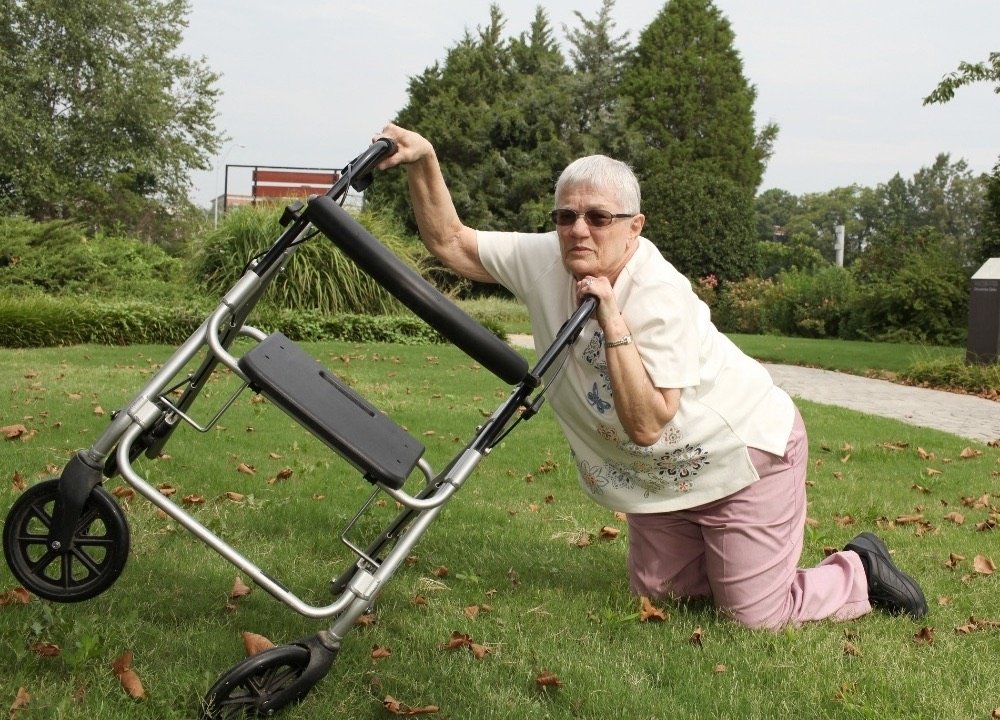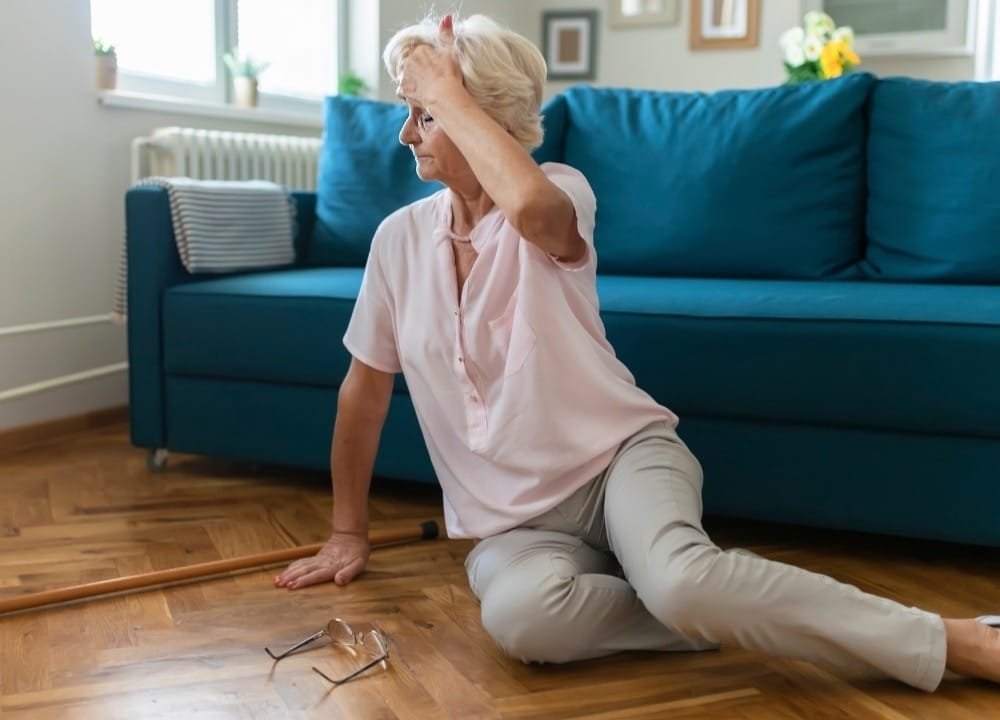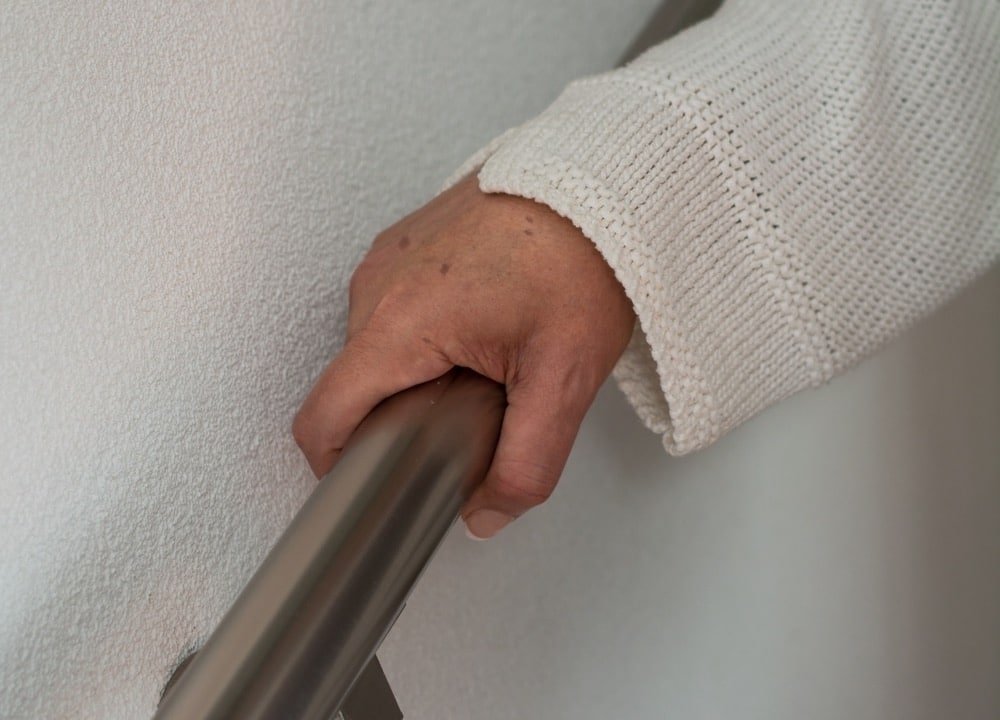It is common for people to ask, “is tripping a sign of dementia,” when looking after seniors or other individuals who are susceptible to developing the progressive illness.
While “healthy” individuals may trip now and then, a person with dementia may start to trip over their feet constantly which can lead to serious falls.
Research indicates that falling frequently could be one of the early warning signs for Alzheimer’s disease one of the most common causes of dementia.
The Risk of Falls Affects People with Dementia
A 2011 study in Age and Aging reported that hip fractures and the risk of falls affect people with Alzheimer’s disease (AD) three times more than people without the illness.
Another study published in the journal Neurology in 2013, concluded that presumptive preclinical Alzheimer’s disease is a risk factor for falls in the elderly.
The study revealed that persons with AD dementia have an increased risk of falls. The study primarily observed the rate of falls of community-dwelling cognitively normal seniors.
Some of the participants of the study had preclinical AD that was detected through imaging biomarkers and CSF.
After 12 months, the researchers found out that older adults who had preclinical AD had more cumulative fall incidences when compared to the older adults who did not have preclinical Alzheimer’s.
Losing balance while walking or standing in the early stages or even before other dementia symptoms show up may be an indication of an increased risk of developing Alzheimer’s disease.
It may also be a sign that a person is suffering from a different type of dementia other than Alzheimer’s like vascular dementia.
The cerebellum is the part of the brain that controls body movement.
Illnesses that affect the cerebellum end up affecting an individual’s balance. Several types of dementia fit this bill.
An example is a vascular dementia that is caused by a lack of blood flow to the cerebellum.
What Causes People with Dementia to Trip and Fall?

Several factors have been associated with the risk of tripping and falling among persons with dementia and some of them include:
Poor Balance, Physical Weakness, and Changes in Gait
Some people will start developing mobility issues as soon as memory problems begin while others will remain in great physical shape during the early stages of the diseases.
As the illness progresses it causes a decline in strength, balance, and walking which might cause an individual to trip and fall frequently.
Side Effects from Medication
When asking if tripping is a sign of dementia it is critical to want to know what is causing the behavior.
Some drugs a person is taking can increase their risk of tripping.
An example is antipsychotic medications which can have an orthostatic hypotension side effect. This is where an individual experiences a sudden drop in blood pressure after standing up too quickly.
Other medications like the ones that facilitate sleep (hypnotics) can cause lingering drowsiness which can increase the chances of tripping.
Drugs that people take for blood pressure can cause light-headedness or dizziness which can lead to an increased risk of tripping.
Memory Impairment
It can be difficult to prevent a person who has dementia from tripping as the disease continues to progress.
One of the reasons for this is the cognitive decline that is associated with the illness.
For instance, a loved one might tell the person with dementia not to walk about without assistance but they forget and continually want to walk independently even when it is not safe.
Lack of Physical Exercise
A person with dementia may start to trip many times because they are not getting enough exercise.
Exercising can help improve balance by strengthening muscles in various body parts including the spine, legs, torso, and hip enabling a more upright and erect posture.
Maintaining an upright posture implies that an individual will be less likely to overcompensate for imbalances that occur when walking, bending, reaching, and turning.
Visual-Spatial Problems
Dementia is known to affect a person’s visuospatial abilities.
This means that an individual can misinterpret what they see or misjudge uneven terrains, steps, changes in floor color, and shiny spots on the floor.
Fatigue

Some people may end up tripping a lot in the evenings because they are simply too tired from the activities of the day; hence, cannot move about well.
Poor Judgement
At times, tripping may occur as a result of poor-decision skills which are common with persons who have dementia.
This can be anything from walking outside in the middle of winter on ice or walking down the steps without assistance.
Clutter
The home condition of a person with dementia might also increase their risk of tripping. For example, if there is too much clutter, it may be hard for them to navigate around without tripping on something.
Some people with dementia get into the habit of hoarding stuff which can put them at risk of tripping.
Tips for Preventing Falls for People with Dementia

When people with dementia trip and fall, they can end up fracturing their hips which can lead to immobility and surgery.
Death rates following hip fractures are also on the increase.
Thus, it is important to minimize the risk of falls among persons with dementia. Especially now, when we know that tripping can be a sign of dementia.
Some of the steps that can be taken towards this include:
Try and Understand why a Person Falls
Knowing what makes a person with dementia trip and fall can help anticipate their needs which will, in turn, decrease the falls.
For instance, the person with the illness may be restless because their body needs to be exercised and stretched out.
The individual may also be tired of sitting in one position for a long period; thus, want to get up and start moving around even when it is not safe.
To prevent tripping and falling from happening, it is important to ensure a person gets enough exercise and their positions are changed frequently enough so that they are always comfortable.
Pain, discomfort, thirst, hunger, boredom, and a need to use the bathroom may be other factors that cause a person to want to move around unsafely.
This is especially when the individual with dementia cannot communicate their needs well.
If a person is constantly tripping, check some of these factors and ensure their needs are well taken care of to prevent the risk of falls.
Make the Home Safer

To prevent tripping, the house where the individual with dementia lives can be made safer for navigation. We also have an entire guide on how to make a dementia-friendly home.
This can be done in a few steps such as:
- Putting away obstacles on the floor like clothes or shoes that a person can trip over
- Installing grab bars in bathroom by the tub or shower,and toilet
- Ensuring a person has the items they need within reach so that they do not have to strain to get them
- Ensuring the entire house is well lit at all times so that the affected person can see things clearly
- Installing handrails on staircases
- Avoiding shoes or slippers with deep treads. Where possible, it is best to invest in footwear that has thin non-slip soles
Getting rid of clutter outside can also be useful.
The area outside the house should be clear of objects like stones, rocks, and leaves, etc. The uneven ground on an elderly’s path and dips in walkways should also be avoided.
Use of Mobility Aids
Persons with dementia may find mobility aids like walkers and canes quite useful because they can use them to comfortably walk and stand.
It is best to consult a physical therapist or doctor before purchasing a mobility aid because some may increase the risk of tripping depending on the person who is using them.
An individual’s grip strength, gait, and balancing ability are some of the factors that are put into consideration before choosing the mobility aid to purchase.
After getting a walker a crane, it is best to monitor how the person is using them to make sure they are using it properly.
Lowering Noise Levels
Persons who have dementia may be sensitive to loud noises. It is therefore important to reduce loud sounds and white noise around them.
When the noise levels become unbearable to the affected individuals, it can cause anxiety and nervousness which can make the person unsteady on their feet.
Keep Help Close by

It is important for a person who is at risk of tripping to easily and fast call for help when need be.
An individual can invest in remote care technology to help with this.
It can be anything from an auto detector or fall alert bracelet that they can use in the event of an emergency.
Offer Visual Contrast
Using contrast in color is important to help define objects from the background. It is best to use solid colors that do not have any patterns to decrease confusion.
Avoid using black surfaces because they can be misconstrued for a black hole.
For instance, a person can place contrasting colored decals or rubber mats at the bottom of the tab.
If there are light-colored walls, darker handrails can be installed.

